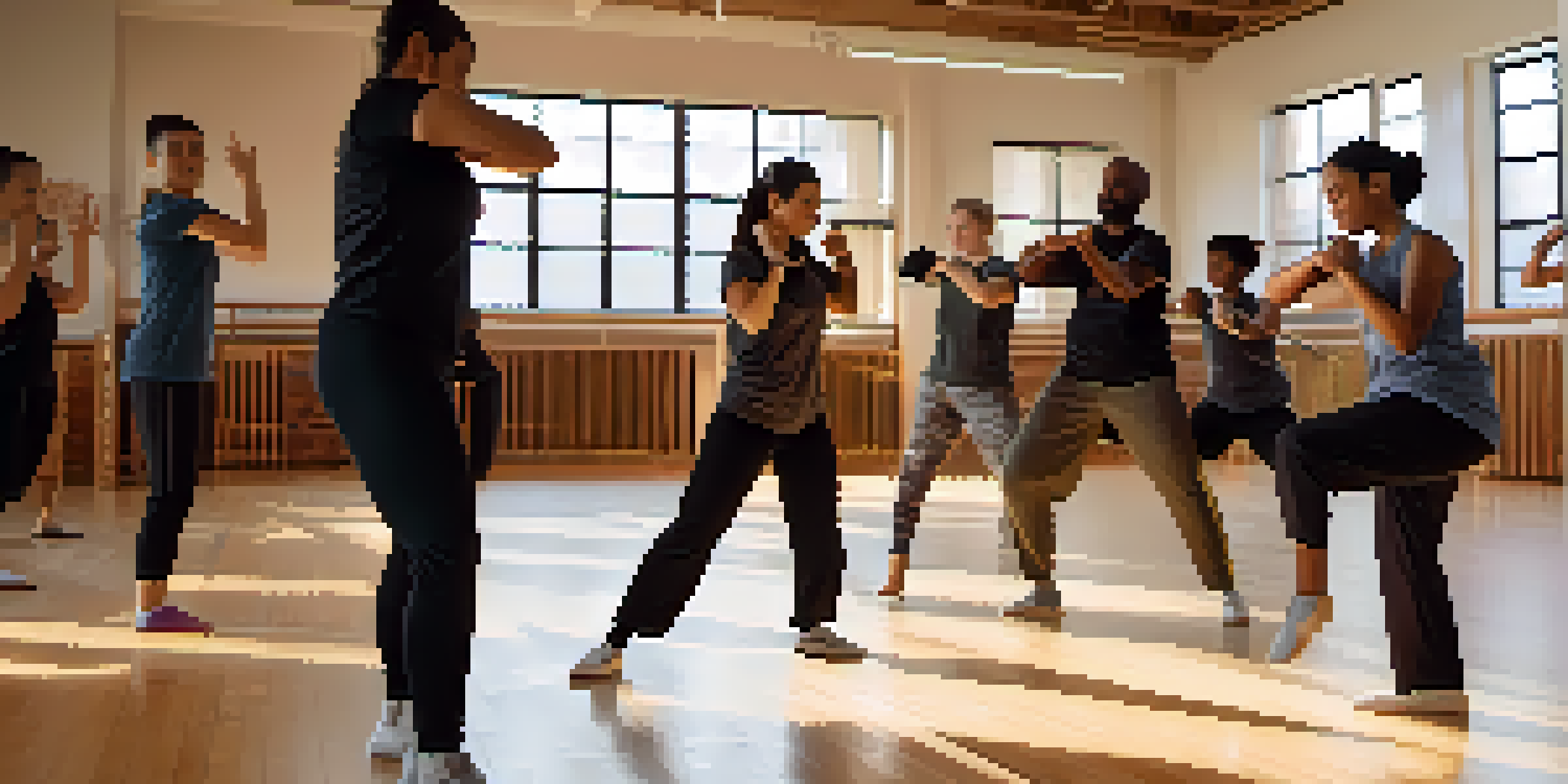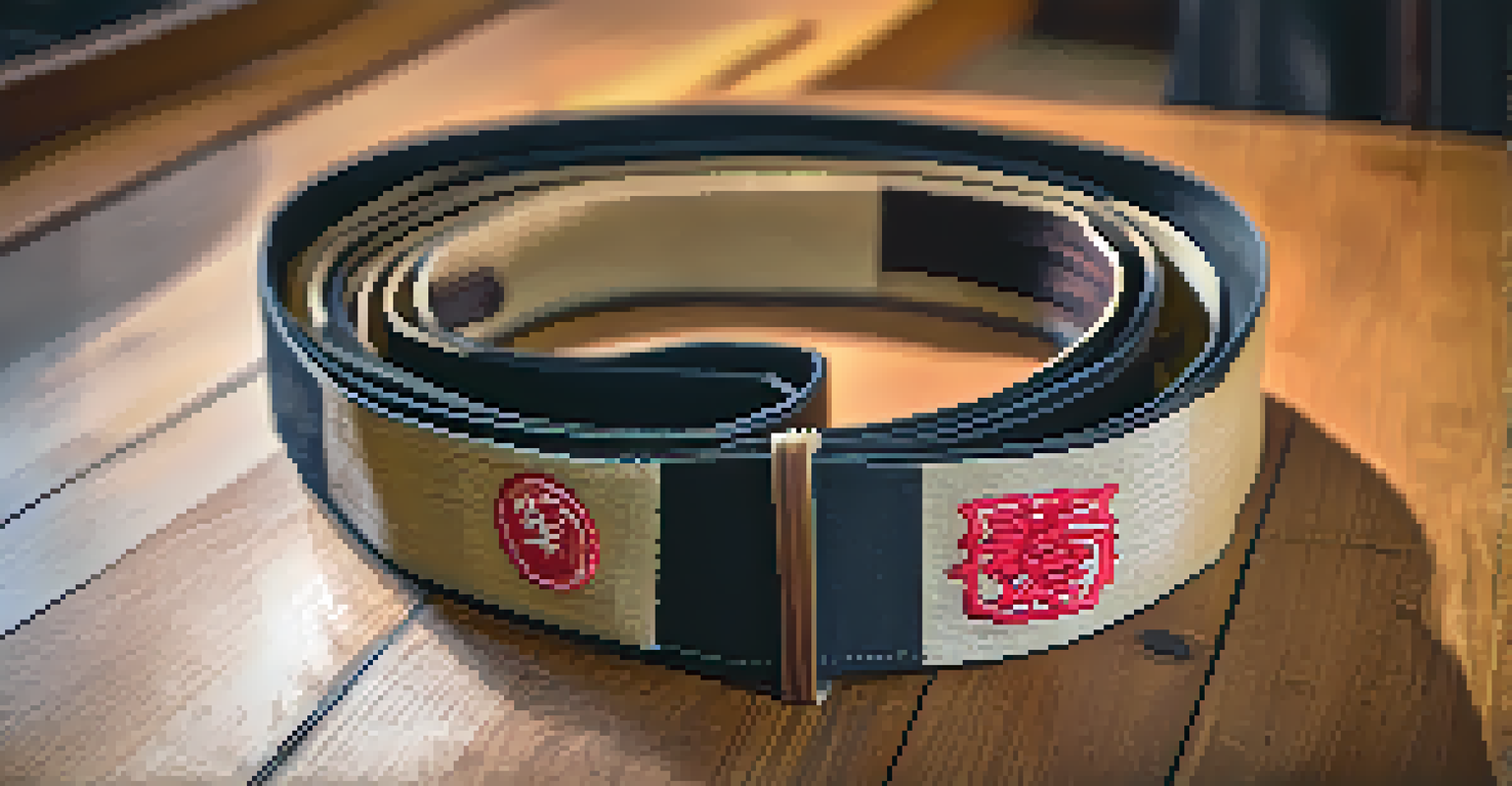The Role of Social Norms in Shaping Self Defense Techniques

Understanding Social Norms and Their Influence
Social norms are the unwritten rules that govern behavior in society. They shape our perceptions of what is acceptable or appropriate in various situations. For instance, in some cultures, physical confrontation is seen as a last resort, while in others, it might be viewed as an acceptable initial response.
Social norms are not only a reflection of our values but also a powerful influence on our behavior and interactions with others.
These norms can vary significantly between communities, impacting how self-defense is taught and perceived. In societies where aggression is frowned upon, individuals may be less likely to consider physical defense as a viable option. Conversely, in cultures that value assertiveness, self-defense techniques may be embraced more readily.
Understanding these social norms is crucial for anyone looking to learn self-defense. It helps practitioners align their training with the cultural context they inhabit, ensuring that their techniques are both effective and socially acceptable.
The Impact of Gender Norms on Self Defense
Gender norms play a significant role in how self-defense techniques are perceived and practiced. Traditionally, society has imposed different expectations on men and women regarding strength and vulnerability. For instance, women may be encouraged to learn self-defense techniques that emphasize evasion rather than aggression.

This difference in approach can affect the types of self-defense classes offered and the techniques taught. In many cases, women's self-defense classes focus on situational awareness and de-escalation tactics, while men's classes might emphasize more aggressive techniques. This reflects a broader societal belief about gender roles.
Social Norms Shape Self-Defense Views
Social norms dictate perceptions of acceptable self-defense practices, influencing how techniques are taught and embraced across cultures.
As these norms evolve, so too does the landscape of self-defense. An increasing number of programs are now encouraging all genders to explore a variety of techniques, breaking down traditional barriers and promoting a more inclusive approach.
Cultural Influences on Self Defense Techniques
Cultural background significantly influences the types of self-defense techniques that are prevalent in a community. For instance, martial arts rooted in Asian cultures, like karate or judo, emphasize discipline and respect, while Western techniques may focus more on aggression and physicality. This cultural lens shapes how individuals perceive and practice self-defense.
The media shapes our perceptions and understanding of the world around us, including our views on self-defense and personal safety.
In some cultures, traditional techniques are taught alongside modern practices, creating a rich tapestry of self-defense styles. For example, Brazilian Jiu-Jitsu combines historical techniques with contemporary self-defense principles, appealing to a diverse audience. This blending reflects a community's values and its approach to personal safety.
Understanding these cultural influences can help individuals choose the right self-defense training for their needs. By appreciating the underlying values of different techniques, practitioners can better connect with their training and its purpose.
The Role of Media in Shaping Norms Around Self Defense
Media representation plays a pivotal role in shaping public perceptions of self-defense. Movies, television shows, and social media often depict self-defense scenarios that can influence viewers' understanding of what is effective or acceptable. For instance, action films frequently portray exaggerated physical confrontations, creating unrealistic expectations.
Additionally, media can also serve as a platform for educating the public about self-defense. Social media campaigns that promote awareness of personal safety and self-defense workshops can empower individuals. This dual role of media can either perpetuate stereotypes or foster a more informed understanding of self-defense.
Gender Norms Affect Self-Defense Training
Gender expectations lead to different self-defense training approaches, with women often learning evasion tactics while men focus on aggression.
As consumers of media, it's essential to critically evaluate these representations. By distinguishing between fiction and reality, individuals can develop a more grounded understanding of self-defense techniques.
Legal Considerations Shaped by Social Norms
Legal frameworks surrounding self-defense are often influenced by prevailing social norms. For example, 'stand your ground' laws in some jurisdictions reflect a more aggressive stance on self-defense, while other areas may impose stricter limitations. These laws can affect how individuals perceive their right to defend themselves.
Social norms can also shape public opinion on what constitutes justifiable self-defense. In some communities, there might be a strong belief in the right to defend oneself aggressively, while in others, the emphasis may be on avoidance and de-escalation. These differing views can create tension within communities, especially in legal cases involving self-defense.
Understanding the legal landscape is crucial for anyone interested in self-defense. It provides context for their training and ensures they are aware of their rights and responsibilities.
The Evolution of Self Defense Techniques Over Time
Self-defense techniques have evolved significantly over time, largely influenced by changing social norms and cultural contexts. For instance, during the late 20th century, there was a surge in interest in martial arts, which not only popularized various techniques but also shifted perceptions of personal safety. This evolution reflects society's growing awareness of individual empowerment.
Today, self-defense training has become more inclusive, integrating various techniques from different cultures and backgrounds. This blending of styles caters to a wider audience, ensuring that more individuals can find a method that resonates with their personal beliefs and physical abilities.
Media Influences Self-Defense Perceptions
Media representation significantly shapes public understanding of self-defense, balancing between perpetuating stereotypes and educating audiences.
As society continues to change, so too will the techniques and philosophies surrounding self-defense. Practitioners must remain adaptable, embracing new ideas while respecting traditional practices.
Community Engagement and Self Defense Training
Community engagement is essential in promoting effective self-defense training. Local organizations often hold workshops and classes that not only teach techniques but also address the unique needs and concerns of the community. This grassroots approach ensures that self-defense training is relevant and accessible to those who need it most.
By fostering a sense of community around self-defense, individuals can share experiences and learn from one another. This collaborative learning environment can be empowering, encouraging individuals to take an active role in their safety and well-being.

Additionally, community engagement can help to challenge and reshape social norms regarding self-defense. By creating open dialogues about personal safety, communities can work together to redefine what self-defense means in their context.